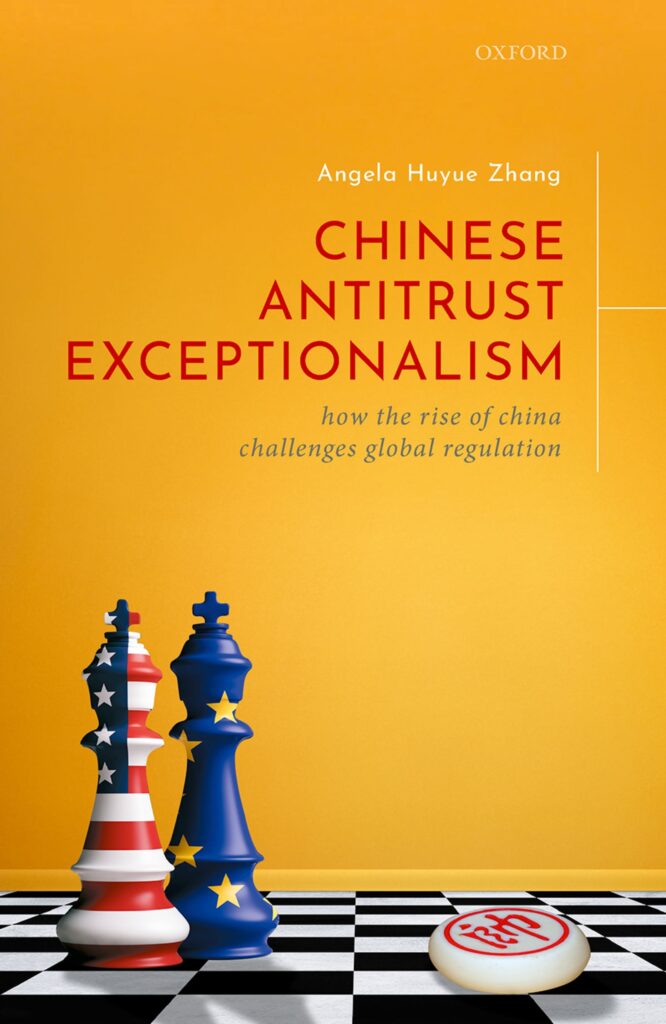A paper by Alexandr Svetlicinii

Besides its significant role in international trade and investment flows as an economic powerhouse, China has also become an important jurisdiction in terms of competition law enforcement. While application of the Anti-Monopoly Law (AML) to commercial activities of domestic companies has important repercussions for their market conduct abroad, the enforcement of merger control directly affects multinational companies, which, due to their business presence in China, have to notify their mergers and acquisitions for clearance by China’s competition authorities.
Like numerous other jurisdictions, China applies its merger control to those transactions by multinational companies where the parties have substantial business presence on the Chinese markets expressed in terms of the realized turnover. It embraces the “effects doctrine”, meaning that it applies merger control extraterritorially “to monopolistic conducts outside the territory of the People’s Republic of China, which serve to eliminate or restrict competition on the domestic market of China.” As a result, even a merger of two foreign companies would have to obtain clearance from the Chinese competition authorities provided the turnover-based notification thresholds are reached.
In competition law scholarship, the narrative is strong that China’s merger control converges with that in Western jurisdictions, as it, too, applies economic analysis as a core basis for merger review and enhances procedural safeguards to protect the rights of the merging parties, increasing legal certainty of merger assessment. The Chinese merger control authorities have been frequently labelled as “young,” “unexperienced” or lacking necessary human resources to achieve a more technocratic enforcement of merger control rules. Despite the intentional choices of China’s legislators and regulators to design and implement its merger control regime with “Chinese characteristics”, Western academic literature is abound with hopes for further international convergence.
One of these “Chinese characteristics” was the initial distribution of the AML enforcement competences among three institutions: the National Development and Reform Commission (NDRC), the Ministry of Commerce (MOFCOM), and the State Administration for Industry and Commerce (SAIC). This distribution of AML enforcement powers renders China’s competition law system unique as in most jurisdictions, competition enforcement powers are entrusted to a single competition authority. The NDRC was authorized to enforce the AML against price-related anti-competitive practices, SAIC was responsible for prosecuting non-price-related infringements, while MOFCOM assumed the responsibility for merger control. Despite its extensive expertise on matters related to international trade and foreign investment, MOFCOM had considerably less knowledge and experience with the functioning of the Chinese domestic markets, compared to the other two anti-monopoly enforcement authorities. MOFCOM was relieved of its responsibility for enforcing merger control under the AML in 2018, when the State Council moved to centralize AML enforcement under a single institutional roof by establishing the State Administration of Market Regulation (SAMR). The Anti-Monopoly Bureau of the MOFCOM subsequently moved to SAMR. Finally, in 2021, China separated its competition authority into an independent Anti-Monopoly Bureau (AMB) that was elevated from the rank of a department within SAMR to a deputy ministerial-level agency. The AMB fully absorbed the merger control department of the SAMR.
While national competition authorities in many jurisdictions have to ensure that their merger decisions contain sufficient reasoning in order to allow for a meaningful judicial review, that is not the case in China. Practitioners frequently note the lack of transparency on the part of the MOFCOM and consider the published decisions of little instructive value for the legal and business strategies of the merging parties. The lack of clarity appears intentional since it increases the de facto discretion of the competition authorities in identifying their concerns and encourages merging parties to engage in negotiations to find the acceptable remedies. Furthermore, unlike other areas of AML enforcement, courts have virtually not played a role in clarifying merger control concepts. As a result, the interpretation of merger rules has been entirely in the hands of the enforcement authorities.
During 2008-2013, out of 750 notifications by AML enforcement agencies, only 57 (8%) concerned transactions involving exclusively domestic companies. This led to the impression that China’s competition authorities intentionally target foreign companies in their merger review. However, instead of focusing on whether China’s merger control deliberately discriminates foreign firms, it would be more relevant to discuss how effective or relevant merger review is for domestic enterprises. One of the reasons for the absence of domestic-to-domestic mergers from the “problematic” cases where mergers were prohibited or cleared with conditions has to do with China’s market structures. In those markets where there is no monopolistic or dominant state-owned enterprise (SOE), the market shares of the parties tend to be rather small, concentration ratios are relatively low, and intended concentrations won’t have significant effects on competition. Due to their importance for the Chinese economy, although the consolidations of the Chinese SOEs were regarded as concentrations of undertakings and fell within the scope of merger control, once the government announces the reorganization of the relevant SOEs, the respective merger clearance of MOFCOM/SAMR remained a formality. While several high-profile SOE mergers passed the merger review, there are numerous instances where SOEs have omitted to submit their merger notifications and were fined with a penalty of up to CNY 500,000. This fine however is unlikely to serve as a sufficient deterrence. Therefore, although formally the merger control rules under the AML are applicable to foreign and domestic companies alike, the merger review was used more assertively in relation to foreign companies as such entities are not state-owned or regulated by means which the Chinese authorities normally use in relation to domestic market players.
Our study of China’s merger control enforcement is based primarily on conditional clearances and prohibition decisions since the AML does not require publication of unconditional clearances. Attempts to screen conditional merger decisions for factors that have been actually considered by MOFCOM/SAMR during the merger assessment process produced only anecdotal evidence. On the other hand, the formulation of merger remedies can serve as a litmus test for assessing the convergence, or lack thereof, between the Western-style, primarily economics-based merger control regimes and China’s sui generis merger control system.
It was widely noted that the most apparent divergence with Western jurisdictions consists in China’s competition authorities’ preference for behavioural remedies. Unlike the structural remedies that preserve market structures by separating certain business units from the control of the merging parties (mainly through divestitures), behavioural remedies allow the competition authorities to shape the specific commercial practices (price levels, sales volumes, market expansions, supply to certain customers, etc.) of the merging parties even after the merger is completed. Behavioural remedies (purely behavioural remedies) were imposed in 40% of cases and hybrid (structural and behavioural) remedies in 25% of cases. The maintenance of behavioural remedies represents a significant interference in the merging parties’ business activities.
For example, in the 2014 Microsoft/Nokia case, MOFCOM used behavioural remedies to ensure that the standard essential patents held by the merging parties would be licensed on FRAND (fair, reasonable, and non-discriminatory) terms. The competition authority has justified its decision by the prevention of possible abuses of patents that may occur post-merger. In another 2014 case, Thermo Fisher/Lifei, the acquiring company was required to lower the China market list prices for its products in the next ten years and not to reduce the discount offered to Chinese customers. Another example of a behavioural remedy is the requirement to notify and ask for permission the competition authority in China about any further expansion of the merging parties’ business.
The present study of China’s merger control legislation and enforcement records demonstrates that while formally following the widely accepted competition harm theories, the significant discretion of the merger control authorities results in a limited degree of predictability in merger assessment. With regard to the nationality of the merging parties subjected to prohibitions or imposition of remedies, enforcement statistics suggest that China’s merger control enforcement is applied more assertively in relation to foreign companies.
The paper China’s Merger Control: Competition Assessment or Foreign Investment Screening? was published in the KLRI Journal of Law and Legislation. Alexandr Svetlicinii is Associate Professor at the University of Macau, Faculty of Law where he also serves as the Programme Coordinator of Master of Law in International Business Law. He is the author of the monograph Chinese State-Owned Enterprises and EU Merger Control.


